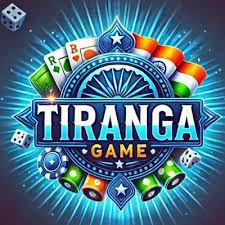views
Tiranga: The Symbol of India's Pride, Unity, and Freedom

India, a land of rich history, diverse cultures, and deep-rooted traditions, holds many symbols that evoke national pride. Among them, none is more powerful, more inspiring, or more universally recognized than the Tiranga, the national flag of India. The Tiranga — meaning "tricolour" in Hindi — is not just a piece of cloth; it is a living symbol of the nation's values, struggles, unity, and aspirations. From the era of colonial resistance to the modern Republic, the Tiranga has stood as a proud emblem of the Indian spirit.
Historical Significance of the Tiranga
The journey of the Indian national flag began long before India gained independence. In the early 20th century, during the British colonial rule, several versions of flags were proposed and used in protests and movements. The first national flag is said to have been hoisted on August 7, 1906, at Parsee Bagan Square in Kolkata. It had three horizontal stripes — green, yellow, and red — and included symbols like the sun and the moon, along with "Vande Mataram" inscribed on it.
However, the present form of the Indian national flag was adopted on July 22, 1947, shortly before India gained independence on August 15, 1947. Designed by Pingali Venkayya, a freedom fighter from Andhra Pradesh, the flag was adopted by the Constituent Assembly and became a symbol of a free and sovereign nation.
Design and Meaning of the Tiranga
The national flag of India consists of three horizontal stripes of different colors:
-
Saffron (Top): This color represents courage, sacrifice, and the spirit of renunciation. It reminds the citizens of the sacrifices made by freedom fighters and soldiers to keep the nation united and independent.
-
White (Middle): White stands for truth, peace, and purity. It reflects the nation's commitment to honesty, fairness, and non-violence — principles strongly advocated by Mahatma Gandhi.
-
Green (Bottom): Green represents prosperity, life, and growth. It signifies the country’s fertile land, its agriculture, and the faith in its future development.
In the center of the white band is a navy-blue wheel with 24 spokes, known as the Ashoka Chakra. This wheel is taken from the Lion Capital of Ashoka at Sarnath and symbolizes the eternal wheel of law (Dharma). The 24 spokes represent 24 hours in a day, indicating that there is life in movement and death in stagnation. It is a call to progress and continuous effort.
Respecting the National Flag
The Tiranga is held in the highest regard by Indian citizens. It is not just a flag but a symbol of the values the country stands for. The Flag Code of India, originally established in 1950 and amended in later years, provides guidelines on the correct display, usage, and handling of the national flag.
Some key rules include:
-
The flag must be treated with dignity and respect.
-
It should not touch the ground or water.
-
The top saffron band must always be on top when displayed horizontally.
-
The flag should be flown from sunrise to sunset and must be properly illuminated if displayed at night.
In 2002, the Indian government allowed citizens to hoist the national flag on any day, not just on national holidays, provided they follow the Flag Code. This decision was largely influenced by a public interest litigation filed by industrialist Naveen Jindal, who believed in the people's right to express their patriotism freely.
Tiranga in the Freedom Movement
During India's long struggle for independence, the national flag became a potent tool for uniting people across castes, religions, languages, and regions. It was carried in rallies, hoisted in protest against British rule, and became a target of colonial suppression. British authorities often arrested those who raised the flag in defiance, but the people’s spirit remained unshaken.
The Tiranga was first unfurled on foreign soil by Madam Bhikaji Cama in Stuttgart, Germany in 1907, during an international socialist conference. She declared India's right to independence and unfurled a version of the Indian flag, proclaiming her patriotism to the world.
Tiranga in Modern India
Today, the Tiranga continues to inspire over 1.4 billion Indians. It is proudly hoisted on Republic Day, Independence Day, and other national events. It adorns government buildings, schools, and public spaces. During times of national joy — such as India’s achievements in space, sports, and global diplomacy — and in moments of sorrow — such as during national disasters or the loss of brave soldiers — the Tiranga stands tall, a silent witness to the nation’s emotional journey.
The Har Ghar Tiranga campaign launched by the Government of India in 2022, as part of the Azadi Ka Amrit Mahotsav, encouraged citizens to hoist the national flag at their homes. This initiative rekindled patriotic fervor and reminded every Indian that the flag belongs to all of us.
Conclusion
The is more than a tricolour fabric — it is a representation of every Indian’s identity. It embodies the sacrifices of the past, Tiranga the challenges of the present, and the dreams of the future. Every time we see the flag fluttering in the breeze, it stirs a sense of belonging, unity, and pride.
As responsible citizens, we must respect the Tiranga and uphold the values it represents: unity in diversity, courage, truth, and progress. Whether displayed at schools, parliaments, stadiums, or homes, the national flag reminds us that
Let us salute the Tiranga — the pride of our nation — and promise to always hold it high, in our hands and in our hearts.















Comments
0 comment